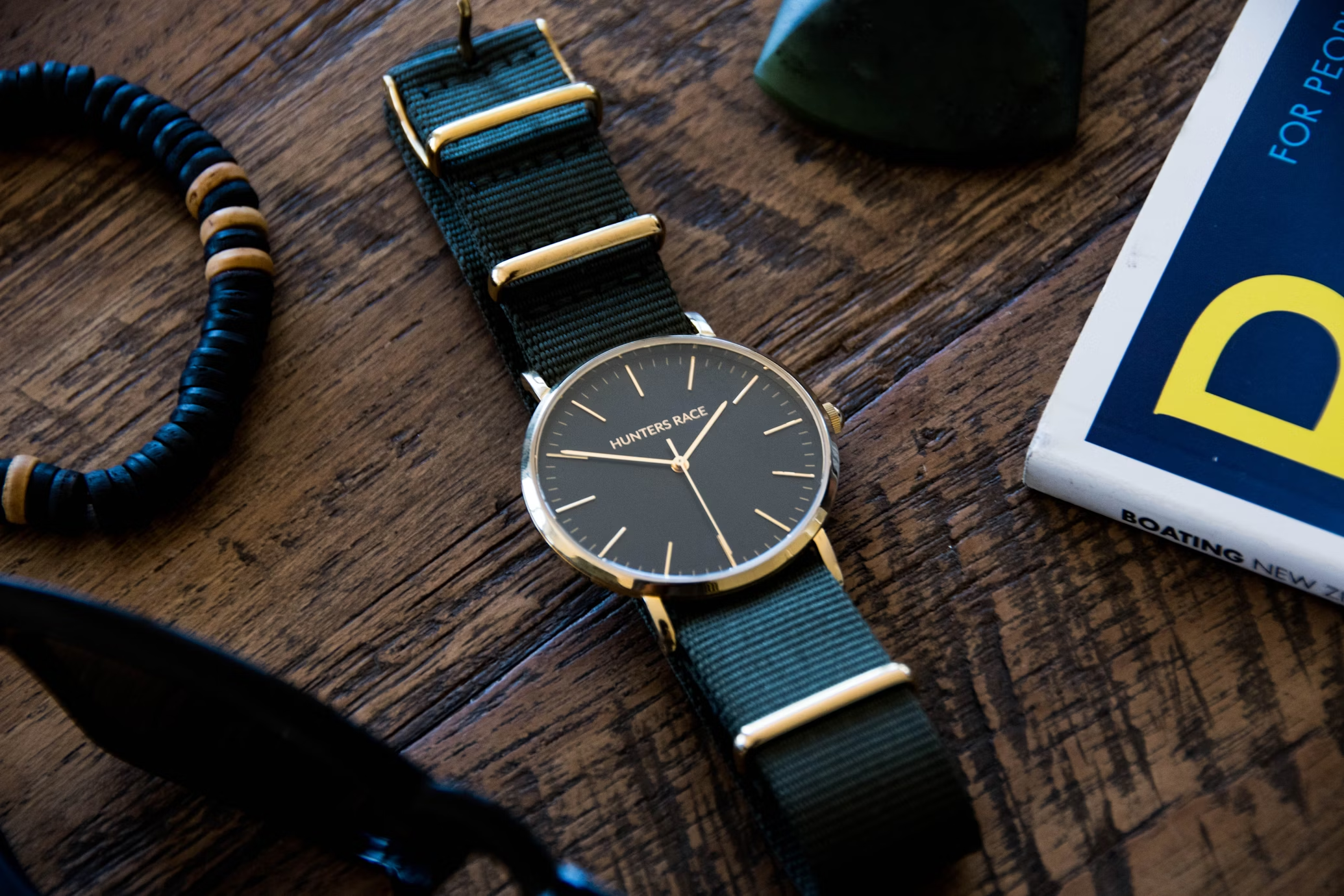Watch polishing is an important aspect of maintaining the appearance and value of a timepiece. Over time, watches can become scratched, tarnished, or dull due to daily wear and exposure to the elements. Polishing a watch can restore its shine and remove scratches, making it look like new again.
There are several methods for polishing a watch, ranging from DIY techniques to professional services. DIY methods include using a polishing cloth or paste to buff out scratches and restore shine. Professional services typically involve a more thorough cleaning and polishing process, including disassembling the watch to access hard-to-reach areas and using specialized equipment and techniques to achieve the best results. It is important to note that not all watches can be polished, and some may require specialized care or repair to maintain their value and appearance.
Understanding Watch Polishing
Basics of Watch Polishing
Watch polishing is a process of removing scratches, dents, and other imperfections from the surface of a watch. It is done to restore the watch's appearance and to protect it from further damage. Polishing can be done on various parts of the watch, including the case, bracelet, and crystal.
The process of watch polishing involves several steps. First, the watch is disassembled to access the parts that need polishing. Then, the watchmaker uses various tools and compounds to remove scratches and other imperfections. The watchmaker then reassembles the watch, ensuring that each component is properly placed.
It is important to note that watch polishing is not a permanent solution. Over time, the polished surface can become scratched and dull again. Therefore, it is recommended to have the watch polished only when necessary.
Types of Finishes
There are different types of finishes that can be applied to a watch. The most common finishes are brushed, polished, and mirror.
A brushed finish is achieved by using a wire brush to create a textured surface. This finish is often used on the bracelet of a watch to give it a matte appearance.
A polished finish is achieved by using a polishing compound to create a smooth surface. This finish is often used on the case of a watch to give it a shiny appearance.
A mirror finish is achieved by using a polishing compound to create a highly reflective surface. This finish is often used on the bezel of a watch to give it a luxurious appearance.
It is important to note that the type of finish applied to a watch can affect its durability. A polished surface is more prone to scratches and other damage compared to a brushed surface. Therefore, it is important to choose a finish that suits the wearer's lifestyle and preferences.
Preparation and Tools
Before polishing a watch, it is essential to select the right tools and prepare the watch for the polishing process. This section will cover the tools required for polishing and preparing the watch.
Selecting the Right Tools
To achieve a polished finish on a watch, one must have the right tools. The following are some of the essential tools required for polishing a watch:
-
Polishing cloth: A polishing cloth is a soft and non-abrasive cloth that is used to clean and polish the watch. A microfiber cloth is a good option for polishing as it is gentle on the watch and does not leave any scratches.
-
1500-grit sandpaper: 1500-grit sandpaper is used to remove scratches and dents from the watch. It is essential to use a finer grit sandpaper to avoid damaging the watch.
-
Polishing compound: Polishing compound is a paste that is used to polish the watch. It is available in different grades, and one must choose the right grade based on the watch's material.
- Aluminum cleaner: Aluminum cleaner is used to clean the watch's metal parts. It is essential to use a non-abrasive cleaner to avoid damaging the watch.
Preparing Your Watch
Before polishing the watch, it is essential to prepare it for the polishing process. The following are some of the steps required to prepare the watch:
-
Remove the watch strap or bracelet: The watch strap or bracelet must be removed before polishing the watch. This will help to avoid damaging the strap or bracelet during the polishing process.
-
Clean the watch: The watch must be cleaned thoroughly before polishing. Use a soft and non-abrasive cloth to clean the watch. Ensure that all the dirt and grime are removed from the watch.
-
Apply the polishing compound: Apply the polishing compound on the watch's surface using a soft cloth. Rub gently in a circular motion until the desired shine is achieved.
- Clean the watch again: After polishing the watch, it must be cleaned again to remove any residue left by the polishing compound. Use a clean and dry cloth to wipe the watch's surface.
In conclusion, selecting the right tools and preparing the watch are crucial steps in the watch polishing process. It is essential to use the right tools and follow the proper steps to avoid damaging the watch.
The Polishing Process
When it comes to polishing a watch, the process typically involves two main steps: removing scratches and achieving the desired finish. The process can be done by hand or with a polishing motor, depending on the level of precision required.
Removing Scratches
The first step in the polishing process is to remove any scratches on the watch's surface. This is typically done by using a polishing compound and a soft cloth or polishing wheel. The polishing compound is applied to the surface of the watch and then buffed in a circular motion until the scratches are removed.
For deeper scratches, a more aggressive polishing compound may be required. It's important to be careful not to apply too much pressure, as this can damage the watch's surface. It's also important to avoid polishing any areas that don't have scratches, as this can create an uneven finish.
Achieving the Desired Finish
Once the scratches have been removed, the next step is to achieve the desired finish. This can be done by either brushing or polishing the watch's surface.
Brushing involves using a wire brush or abrasive pad to create a matte finish on the watch's surface. This is typically done by brushing the surface in a single direction until the desired finish is achieved.
Polishing, on the other hand, involves using a polishing compound and a soft cloth or polishing wheel to create a shiny finish on the watch's surface. This is typically done by applying the polishing compound to the surface of the watch and then buffing it in a circular motion until the desired finish is achieved.
Overall, the polishing process requires a steady hand and a good eye for detail. Whether done by hand or with a polishing motor, it's important to take the time to ensure that the watch's surface is polished to perfection.
Caring for Different Watch Materials
When it comes to polishing watches, it's important to know the right techniques for different watch materials. Each type of material requires specific care to ensure that the watch retains its luster and elegance. Here are some tips for caring for different watch materials.
Gold and Platinum Watches
Gold and platinum watches are fine metals that require special attention. Polishing these watches too often can cause the metal to wear down over time. It's recommended to polish gold and platinum watches once a year to maintain their shine.
To clean a gold or platinum watch, use a soft cloth and a mild soap solution. Avoid using abrasive cleaners or harsh chemicals as they can damage the metal. After cleaning, dry the watch with a soft cloth and polish it with a microfiber cloth to restore its shine.
Steel and Silver Watches
Steel and silver watches are more durable than gold and platinum watches, but they still require regular care to maintain their appearance. To clean a steel or silver watch, use a soft cloth and a mild soap solution. Avoid using abrasive cleaners or harsh chemicals as they can scratch the metal.
For stainless steel watches, fingerprints and smudges are common adversaries in maintaining the watch's appearance. Use a microfiber cloth to wipe off smudges and fingerprints. For scratches on stainless steel watches, use a polishing cloth or a polishing compound to remove the scratches.
Silver watches can tarnish over time, so it's important to store them properly and clean them regularly. To prevent tarnishing, store silver watches in a cool, dry place away from direct sunlight. To clean a tarnished silver watch, use a silver polishing cloth or a silver polishing compound.
In summary, polishing watches is an important part of watch maintenance. Knowing the right techniques for different watch materials can help ensure that the watch retains its luster and elegance for years to come.
Professional Watch Polishing
When it comes to polishing a luxury timepiece, it is essential to consult a professional watchmaker who is experienced in working with high-end watches. A reputable watch repair center employs skilled, Swiss-trained watchmakers who have extensive experience in cleaning and polishing luxury watches. They use advanced tools and equipment to ensure a thorough and efficient cleaning and polishing process.
When to Consult a Watchmaker
If a luxury watch has scratches, dents, or other signs of wear and tear, it is best to consult a watchmaker. A professional watchmaker can assess the condition of the watch and determine the best course of action to restore its appearance. They have the expertise and knowledge to identify any underlying issues that may need to be addressed.
Maintaining a Luxury Timepiece
After polishing a luxury timepiece, it is important to maintain it properly to keep it looking its best. Here are some tips for maintaining a luxury watch:
- Avoid exposing the watch to extreme temperatures, moisture, and direct sunlight.
- Store the watch in a cool, dry place when not in use.
- Clean the watch regularly with a soft, dry cloth to remove any dirt or dust.
- Avoid wearing the watch while engaging in activities that may damage it, such as swimming or playing sports.
- Keep the watch away from magnetic fields, as they can affect the accuracy of the watch.
It is also important to note that many luxury watch brands, such as Omega, Patek Philippe, Audemars Piguet, and Rolex, offer warranties on their watches. These warranties can provide peace of mind and protection against any defects or issues that may arise with the watch.











